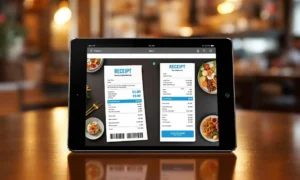Key Takeaways
- Finding the right dropshipping supplier is essential for business success, as unreliable suppliers can lead to inventory problems, delays, and unhappy customers.
- Reliable suppliers ensure product quality, timely shipping, and smooth operations, directly impacting customer satisfaction and profits.
- Entrepreneurs should research supplier directories and marketplaces, evaluate credentials, and test communication before committing.
- Advanced checks like factory audits, certification verification, and tariff research help avoid costly mistakes.
- Building long-term relationships, monitoring supplier performance, and using platforms like frienddropshipping.com make it easier to create a sustainable dropshipping business.
Finding the right dropshipping supplier can make or break an online business. Many entrepreneurs start their dropshipping journey with high hopes, only to face challenges with unreliable suppliers, inventory issues, or shipping delays. Understanding how to find a dropshipping supplier properly is crucial for building a sustainable and profitable business. Platforms like frienddropshipping.com have emerged to help entrepreneurs connect with reliable suppliers and streamline their sourcing process.
This comprehensive guide covers everything from basic supplier research to advanced verification techniques that experienced sellers use to avoid costly mistakes. Whether someone is just starting out or looking to optimize their existing supply chain, this article provides the insights needed to make informed decisions.
What Are Dropshipping Suppliers and Why They Matter
Dropshipping suppliers are companies that handle inventory storage, packaging, and shipping directly to customers on behalf of online retailers. When a customer places an order, the retailer forwards the order details to the supplier, who then ships the product directly to the customer. This business model allows entrepreneurs to start selling without significant upfront investment in inventory.
The quality of dropshipping suppliers directly impacts customer satisfaction, profit margins, and business reputation. A reliable supplier ensures timely deliveries, quality products, and smooth operations, while a poor supplier can lead to negative reviews, refunds, and business failure.
Step-by-Step Guide: How to Find a Dropshipping Supplier
Define Your Product Niche and Requirements
Before searching for suppliers, successful dropshippers first identify their target market and product categories. This involves researching market demand, competition levels, and profit potential. Having a clear product focus helps narrow down supplier options and ensures better alignment with business goals.
Consider factors like product size, weight, fragility, and shipping requirements. Electronics might need specialized packaging, while clothing requires size, variety and quality control. Understanding these requirements upfront helps identify suppliers with the right capabilities.
Research Supplier Directories and Marketplaces
Several platforms specialize in connecting retailers with dropshipping suppliers:
Major Supplier Directories:
- Inventory Source offers comprehensive supplier databases with verification systems
- Spocket focuses on US and European suppliers for faster shipping
- Doba provides access to millions of products from verified suppliers
- SaleHoo maintains a curated directory of legitimate wholesale suppliers
Online Marketplaces:
- Alibaba connects buyers with manufacturers and wholesalers globally
- AliExpress offers individual product dropshipping options
- DHgate provides wholesale and dropshipping services
- Amazon has supplier programs for qualified sellers
Evaluate Supplier Credentials and Reliability
When evaluating potential suppliers, experienced dropshippers look beyond surface-level information. They examine business licenses, years in operation, customer reviews, and response times to inquiries. Reliable suppliers typically have professional websites, clear contact information, and established business processes.
Red flags include suppliers who require large upfront payments, have no verifiable business address, or provide vague responses to specific questions about their operations.
Test Communication and Support Quality
Effective communication is essential for successful dropshipping relationships. Before committing to any supplier, smart retailers test response times, language barriers, and problem-solving capabilities. They ask detailed questions about inventory levels, shipping procedures, and return policies to gauge the supplier’s professionalism and knowledge.
Suppliers who respond quickly with detailed, helpful information typically provide better ongoing support than those who give generic or delayed responses.
Advanced Supplier Verification Techniques
Verifying Real Inventory vs. Intermediaries
One major challenge in dropshipping is distinguishing between actual manufacturers and intermediaries who simply resell products from other sources. Working with intermediaries often results in higher costs, longer shipping times, and inventory synchronization issues.
To verify real inventory, experienced sellers request factory photos, ask for specific product customization options, or inquire about minimum order quantities. Legitimate manufacturers can usually provide detailed product specifications, production timelines, and customization capabilities that intermediaries cannot offer.
Another effective method involves checking if the supplier’s product images appear on multiple other websites. If identical photos are used across many platforms, it often indicates the supplier is sourcing from elsewhere rather than manufacturing directly.
Understanding API Integration Challenges
Modern dropshipping relies heavily on automated systems for inventory management and order processing. However, API integration between suppliers and retailers often presents technical challenges that can disrupt business operations.
Common API issues include inventory synchronization delays, where stock levels update slowly or inaccurately, leading to overselling situations. Some suppliers provide real-time inventory data, while others update only daily or weekly, creating potential problems during high-demand periods.
Order processing automation can also fail due to formatting differences, missing product information, or system compatibility issues. Successful dropshippers always have backup manual processes and maintain close communication with suppliers during integration testing.
International Supply Chain Risk Assessment
Working with international suppliers introduces additional complexities that domestic suppliers typically avoid. Currency fluctuations can impact profit margins unexpectedly, while political tensions or trade disputes may disrupt supply chains entirely.
Shipping delays become more common with international suppliers due to customs processing, documentation requirements, and longer transit distances. During peak seasons or global events (like the COVID-19 pandemic), these delays can extend significantly, affecting customer satisfaction and business reputation.
Language and cultural differences sometimes create misunderstandings about product specifications, quality standards, or business practices. What seems like a minor communication issue can result in receiving completely different products than expected.
Using HS Codes for Tariff Research
Harmonized System (HS) codes are international product classification numbers used for customs and tariff calculations. Smart dropshippers research HS codes for their products to understand import duties, taxes, and regulatory requirements before selecting suppliers.
To find HS codes, retailers can use government trade databases or consult with customs brokers. Once they have the correct code, they can research current tariff rates, which vary by country and product category. Some products face additional anti-dumping duties or special trade restrictions that significantly impact profitability.
For example, certain electronics might face 25% tariffs, while clothing items might have 10% duties plus additional fees. Understanding these costs upfront helps in pricing strategies and supplier selection decisions.
Factory Qualification Auditing
Assessing Manufacturing Capabilities
Professional dropshippers often conduct virtual or physical factory audits to verify supplier capabilities and quality standards. This process involves examining production equipment, quality control procedures, and workforce qualifications. Services like frienddropshipping.com can help streamline this verification process by providing access to pre-vetted suppliers with proven track records.
Key areas to evaluate include production capacity, quality management systems, and compliance certifications. Factories with ISO certifications, industry-specific quality standards, or third-party audit reports typically provide more reliable service than those without formal quality systems.
Production capacity assessment helps determine if the supplier can handle order volume fluctuations, especially during seasonal peaks or promotional periods. Suppliers operating at maximum capacity may struggle to fulfill orders during busy periods, leading to delays and customer complaints.
Compliance and Certification Verification
Different product categories require specific certifications and compliance standards. Electronics need FCC, CE, or similar regulatory approvals, while children’s products require safety certifications like CPSIA compliance in the United States.
Experienced sellers verify these certifications directly with issuing authorities rather than relying solely on supplier claims. Fake or expired certifications can result in product seizures, legal issues, and significant financial losses.
Environmental and social compliance standards are becoming increasingly important for brand reputation and market access. Suppliers with proper labor practices, environmental certifications, and ethical business standards help protect retailers from negative publicity and regulatory issues.
Real-World Challenges and Failure Cases
Inventory Synchronization Disasters
Many dropshippers have experienced situations where suppliers showed products as available when inventory was actually depleted. This leads to accepting orders for products that cannot be fulfilled, resulting in customer complaints, refunds, and negative reviews.
One common scenario involves suppliers who list products on multiple platforms simultaneously without real-time inventory updates. When one retailer sells the last unit, other retailers continue accepting orders for unavailable products, creating fulfillment nightmares.
To avoid these issues, successful dropshippers implement buffer stock policies, regularly verify inventory levels manually, and maintain relationships with multiple suppliers for popular products.
Quality Control Failures
Product quality issues represent another significant challenge in dropshipping relationships. Unlike traditional retail, dropshippers cannot inspect products before they reach customers, making quality control entirely dependent on supplier standards.
Common quality problems include products that differ significantly from descriptions, damaged items due to poor packaging, or counterfeit goods that violate intellectual property rights. These issues can result in high return rates, negative reviews, and potential legal complications.
Experienced dropshippers address quality concerns by ordering samples regularly, monitoring customer feedback closely, and establishing clear quality standards with suppliers. They also maintain relationships with backup suppliers to quickly switch when quality issues arise.
Shipping and Logistics Complications
International shipping involves numerous potential failure points that can disrupt customer deliveries. Customs delays, incorrect documentation, lost packages, and carrier issues all impact customer satisfaction and business operations.
During the 2020-2021 global shipping crisis, many dropshippers experienced severe delays, increased shipping costs, and reduced service reliability. Suppliers who previously offered 7-10 day delivery suddenly required 3-4 weeks, forcing retailers to adjust customer expectations and marketing claims.
Smart dropshippers diversify their supplier base geographically, maintain transparent communication with customers about potential delays, and build shipping buffers into their delivery promises.
Advanced Product Selection and Supplier Matching
Aligning Supplier Capabilities with Business Goals
Different business models require different supplier characteristics. High-volume, low-margin businesses need suppliers with competitive pricing and efficient operations, while premium brands require suppliers with superior quality control and customization capabilities.
Seasonal businesses need suppliers who can handle dramatic volume fluctuations, while evergreen product sellers benefit from suppliers with consistent availability and pricing. Understanding these requirements helps in selecting suppliers that support long-term business success rather than just immediate needs.
Geographic considerations also play important roles in supplier selection. Businesses targeting customers who value fast shipping benefit from domestic or regional suppliers, while price-sensitive markets might accept longer shipping times for lower costs.
Evaluating Supplier Scalability
As dropshipping businesses grow, their supplier requirements evolve significantly. Suppliers who work well for small-scale operations might lack the systems, capacity, or flexibility needed for larger businesses.
Scalable suppliers typically offer features like dedicated account management, custom packaging options, priority processing, and volume discounts. They also have robust systems for handling increased order volumes without proportional increases in errors or delays.
Forward-thinking dropshippers evaluate supplier scalability early in their relationships, even when current volumes are small. This prevents the need for disruptive supplier changes as businesses grow.
Building Long-Term Supplier Relationships
Communication Best Practices
Successful dropshipping relationships require ongoing communication and relationship management. Regular check-ins help identify potential issues before they impact customers, while collaborative planning helps suppliers prepare for seasonal fluctuations or promotional events.
Effective communication includes sharing sales forecasts, providing feedback on product performance, and discussing market trends that might affect demand. Suppliers who understand their partners’ businesses can provide better support and suggest improvements.
Professional dropshippers also maintain emergency communication channels for urgent issues and establish clear escalation procedures for problem resolution.
Performance Monitoring and Optimization
Continuous monitoring of supplier performance helps identify trends and opportunities for improvement. Key metrics include order accuracy rates, shipping times, product quality scores, and customer satisfaction ratings.
Regular performance reviews with suppliers help address issues proactively and recognize excellent service. Suppliers who consistently meet or exceed expectations often receive increased business volume and preferential treatment.
Data-driven performance discussions also help suppliers understand the impact of their operations on the retailer’s business, encouraging continuous improvement and stronger partnerships.
Summary
Learning how to find a dropshipping supplier effectively requires understanding both basic research techniques and advanced verification methods. Success depends on thorough evaluation, ongoing relationship management, and continuous adaptation to changing market conditions.
The most successful dropshippers treat supplier selection as an ongoing process rather than a one-time decision. They continuously evaluate performance, explore new opportunities, and adapt their supplier networks to support their evolving business needs. Platforms like frienddropshipping.com can significantly simplify this process by providing access to vetted suppliers and comprehensive support services.
By following the comprehensive strategies outlined in this guide, entrepreneurs can build reliable supplier networks that support sustainable business growth and customer satisfaction.
Ready to start your dropshipping journey with confidence? Place your first order with frienddropshipping.com and get $5 off directly. Experience reliable suppliers, quality products, and professional support that helps your business succeed from day one.



































